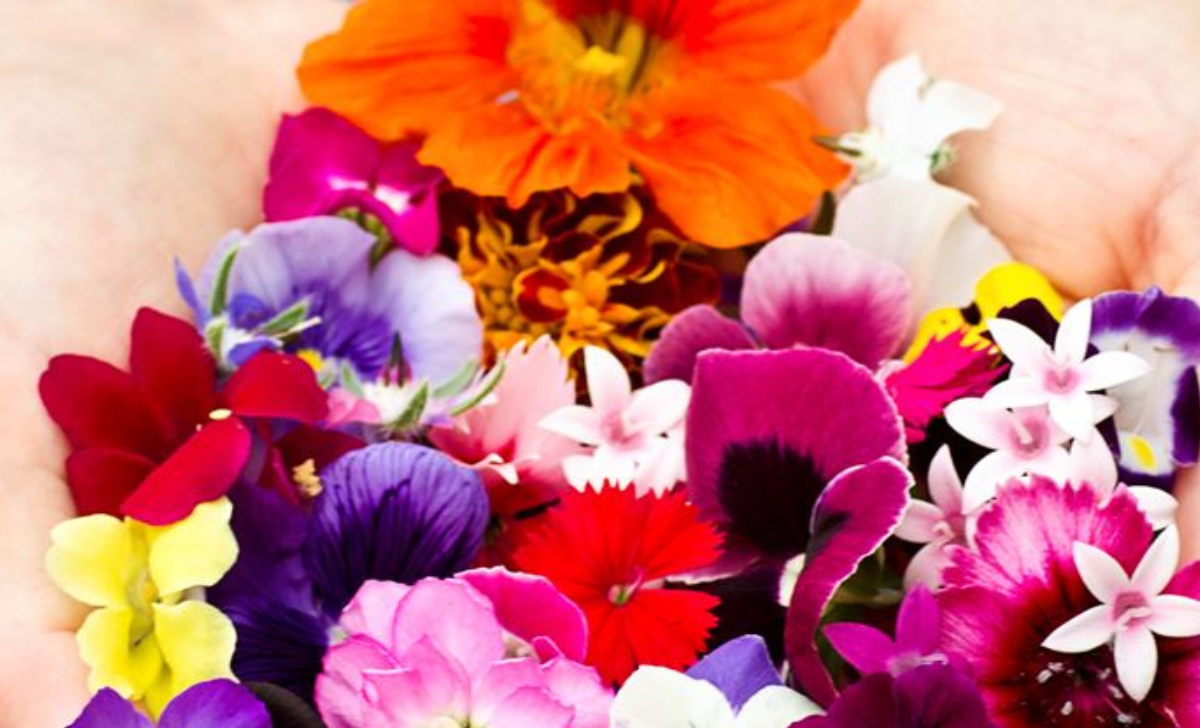Dabur Keora (Kewra) Water - Unleashing the Captivating Essence of Nature's Floral Perfume to Enhance Your Culinary Creations - Aroma & Flavouring agent - for Drinks, Desserts, & More - 250ML Pack of 2
Hello there! If you’re like me and love experimenting with flavors and colors in the kitchen, then edible flowers might just become your new favorite culinary secret. Edible flowers are not only visually stunning but also add a burst of unique flavors to your dishes. Join me on this journey as we explore the world of edible flowers, learn how to pick them at their freshest, and discover some expert tips for incorporating them into your cooking.
Selecting the Perfect Edible Flowers from Your Garden
Imagine strolling through your garden on a warm summer morning, plucking fresh, vibrant flowers to adorn your dishes. Edible flowers like phlox, nasturtium, pansies, and marigold petals are not just eye-catching; they can elevate the taste of your salads and other culinary creations. However, selecting the right flowers is crucial. Remember, it’s all about picking them at their peak freshness.
Exploring a Spectrum of Flavors in Edible Flowers
One of the most exciting aspects of edible flowers is their diverse range of flavors. Herb flowers, for instance, often mimic the taste of the leaves but with a milder intensity. On the other hand, some flowers can be sweet, floral, citrusy, or even reminiscent of peas. The possibilities are endless, and the flavors can be a delightful surprise for your taste buds.
Guidelines for Safely Enjoying Edible Flowers
Before you embark on your edible flower culinary adventure, there are four essential guidelines to keep in mind. Firstly, always be certain of what you’re eating; not all flowers are edible. Consult reliable reference books if you’re unsure. Secondly, opt for organically grown flowers to ensure they’re free from pesticides. Flowers from florists or nurseries may not be suitable for consumption due to potential chemical treatments.
Furthermore, steer clear of flowers picked from roadside areas as they might have been exposed to herbicides and car emissions. Lastly, if you’re new to edible flowers or have allergies or sensitivities, introduce them into your diet gradually to avoid any adverse reactions. It’s always better to err on the side of caution.
Top Edible Flowers to Cultivate in Your Garden
Now, let’s dive into the exciting world of edible flowers you can grow right in your garden. These floral wonders not only bring color to your outdoor space but also introduce a medley of flavors to your meals:
- Nasturtiums: These are perhaps the most well-known edible flowers. Their sweet-spicy flavor is perfect for salads, and their leaves can be used as edible doilies.
- Marigolds: While marigold flavors can range from tangy to bitter, some varieties like French marigold offer a spicy, herbal taste.
- Impatiens: Often overlooked but incredibly handy, impatiens can be used for candying, garnishes, salads, and herbal cocktails.
- Garden Phlox: Known for their intoxicating scent, garden phlox petals are great for sugaring cakes and desserts.
- Calendula: Also called “poor man’s saffron,” calendula adds color and a saffron-like flavor to your dishes.
- Sunflowers: Every part of the sunflower is edible, from buds to petals, leaves, and even roots.
- Dianthus: These include carnations, pinks, and Sweet William, with flavors ranging from spicy to nutmeg-like.
- Roses: Fragrant roses offer a sweet taste with hints of apple, strawberry, cinnamon, or mint, depending on the variety.
- Pansies: These popular edible flowers come in a wide array of colors and offer a mild, slightly minty flavor.
- Daylilies: These blossoms have a mildly sweet flavor, making them perfect for salads and garnishes.
Creative Uses for Edible Flowers in Culinary Delights
Now that you’ve got a garden full of edible treasures, let’s explore creative ways to use them in your culinary creations. Edible flowers aren’t just for garnishing; they can be incorporated into various dishes to tantalize your taste buds.
Imagine pansies adorning your fresh salad, rose petals adding a subtle sweetness to your dessert, or calendula petals infusing butter, cheese, or rice dishes with color and flavor. You can even freeze rose petals in ice cubes to add elegance to your summer drinks.
Flavorful Blossoms: A Closer Look at Different Edible Flowers
Each edible flower has its unique charm and flavor profile. Nasturtiums bring a peppery kick, marigolds offer herbal notes, and impatiens add a touch of sweetness. Garden phlox petals are slightly spicy and sweet, while calendula petals resemble saffron.
Sunflowers surprise with their versatility, and dianthus varieties provide a range of spicy and nutmeg-like tastes. Roses, with their sweet, fragrant petals, are perfect for desserts and syrups. Pansies, in their various colors, offer a mild, minty flavor, and daylilies bring a hint of sweetness.
Adding Color and Taste with Edible Flowers: Expert Tips and Recommendations
As you embark on your edible flower journey, keep in mind that these blossoms not only enhance the visual appeal of your dishes but also introduce a world of flavors. Use them as garnishes, salad additions, candied treats, or for flavoring various dishes. The possibilities are limited only by your creativity in the kitchen.
So, why not step into your garden today, pick a few edible flowers at their peak, and embark on a culinary adventure that combines beauty and taste like never before? Enjoy the burst of colors and flavors that edible flowers bring to your table!


